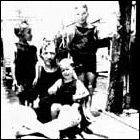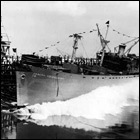| |
 |
|
Ashes
on the Potomac
Dr.
Joseph Goldberger never discovered precisely what was missing from the
diets of pellagrins. The year following the Great Flood, Dr. Joseph Goldberger
fell gravely ill of hypernephroma, a rare form of cancer. He died on
January 17, 1929. His ashes were sprinkled over the Potomac River as
a rabbi chanted Kaddish.
During the next decade, Conrad A.Elevjhem learned that a deficiency
of nicotinic acid, better known as B vitamin niacin, resulted in canine
black tongue disease. In studies conducted in Alabama and Cincinnati,
Dr. Tom Spies found that nicotinic acid cured human pellagrins as well.
Tulane University scientists discovered that the amino acid tryptophan
was a precursor to niacin. When tryptophan was added to commercial
foods such as bread to "fortify" them, it prevented the scourge
of the South. Today, pellagra has been all but banished, except for
infrequent occurrences during times of famine and displacement.
Heroes are few in science as in every field. However, the selfless
devotion of Dr. Joseph Goldberger to relieving the suffering of those
whose plague was born of poverty might well qualify him for the garland.
His portrait hangs in the Director's Building at the National Institutes
of Health as an inspiration to young investigators and a reminder that
medical science is not isolated from the social dimensions of the human
condition.
Back To Top | Photography Credits
|
|
 |
| Dr. Goldberger & Sons |
| |
 |
| Dr. Goldbeger Honored |
| |
|
 |

